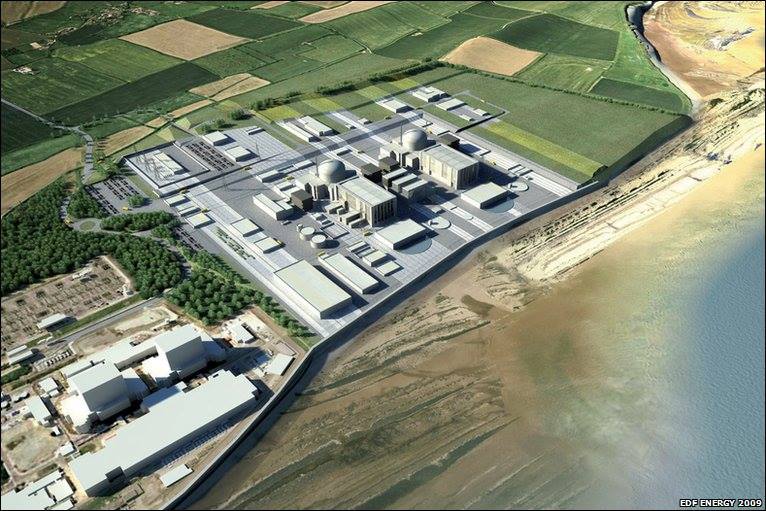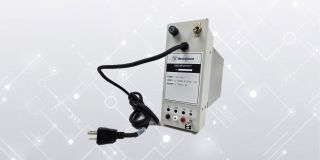New Nuclear Construction Around The World - ANS Winter Meeting 2015

Hinkley Point C preconstruction artwork; courtesy EDF
Written on location at the ANS 2015 Winter Meeting by Will Davis
Today's panel discussion on New Nuclear Construction Around the World contained, as it does every time it's presented at an ANS meeting, a large amount of information on the trends, troubles and successes of new nuclear builds. We'll present some highlights of the session here.
United Kingdom
Ron Cameron of the UK Department of Trade and Investment gave a detailed presentation on the status and arrangements of new nuclear projects in the UK. He opened by observing that it is legally mandated in the UK that carbon emissions drop by 80% by the year 2050, and that while all energy sources are in the mix, nuclear was to be a significant player to provide reliable supply. Cameron brought up an OECD statistic which shows that the absolute limit that renewables penetration can make on a grid before completely destabilizing it is 40% -- which means that low carbon base load power must carry the bulk of the generation responsibility. Nuclear is the only carbon free base load there is; therefore, nuclear has to play a major role.
He pointed out that the liberalized (to us, "deregulated") markets for electricity do not support development or projections about any sort of project beyond five years (well beyond the amount of time it takes to get a nuclear plant from announcement to completion), and so normalizing measures had to be enacted so that nuclear would be able to take the proper place on the grid in the decarbonization scheme. To do this, a strike price deal was made (guaranteeing a price for nuclear generated energy,) and carbon price floors applied. This was also necessary since, as he said, "the nuclear plants were not going to be built off the federal balance sheet - so market adjustment was the only way." Further aids to ensure construction were a UK Guarantee Scheme (loan guarantees) and the institution of a Generic Design Assessment (much like the Design Certification here in the US that certifies a type of nuclear plant, regardless of the location at which it's built.)
Because of the significant UK build program planned, the UK nuclear work force will have to soon start to rapidly increase. It's expected, he said, that the nation will need to hire in about 4000 people a year for ten years, seeing a probable peak nuclear employment of about 100,000 persons in the 2020-2030 time frame.
Integral in the UK government effort is the need to ensure that internal industry growth occurs. The UK feels that it's essential that a nuclear program such as it plans spurs industry and is not just simply imported technology and imported material, such as in the Russian model. "You can have nuclear done to you by someone from the outside, or you can get it to work for you, to develop you, your own country, inside" he quipped.
Of the three major groups working on nuclear, he said that the EDF/CGN group of course now has modified its plans - instead of just two EPR's at Hinkley Point C and Sizewell C there will now be two Hualong One units at Bradwell, given the new developments with the Chinese investment. However, "since the Chinese have tended to say the Hualong is either the CNNC or CGN design, either one, the UK regulators have told them to go off and decide exactly which one it'll be before proceeding with Generic Design Assessment," said Cameron. Horizon, which is to build ABWR units at Wylfa remains on track, with regulators "carefully reviewing the submission since no BWR has ever operated in the UK before." Finally, NuGen's AP1000 application has "52 outstanding issues" that must be resolved but appears on track. ALL THREE projects are due to begin construction and be on line at roughly the same times, pointing up, again, the tremendous need for a large work force and operating force to be built up rapidly.
FINLAND
Kristiina Soderholm of FORTUM gave a sometimes light, sometimes serious presentation that engaged the whole audience. She pointed out the unique Finnish "Decision In Principle" governmental requirement that must be received before building a new nuclear unit, and also noted that FORTUM had applied to build a third unit at Loviisa (to add to the two VVER-440 units there) but was denied the decision. Two other projects did receive permission: Olkiluoto 4, which was granted in 2010 but for which no specific type has yet been selected; and Fennovoima's Hanhikivi-1 which is to be a Russian AES-2006 single unit plant. This latter project is to come on line in 2024.
Soderholm showed a slide indicating that plants considered for the now-cancelled Loviisa-3 project included the ABWR, the AES-2006, the EPR, the ESBWR, and the AP1000. None had yet been selected, so that no determination as to superiority of any over the others was offered. Interestingly, this plant (whichever design was built) was to have also provided district heat to Helsinki, some 80 km away, through the extraction of steam from the low pressure turbines of the plant. She noted that there was some public pushback on this nuclear district heat concept - but with the Decision In Principle denied, this debate obviously never ran to its end.
As to the long delayed Olkiluoto-3 EPR unit, Soderholm (who formerly worked at the unit and described it as "absolutely huge,") said that it should make its latest target to be on the grid in 2018.
There were other presenters and much more information given, but this gives just a hint of the depth of information provided at another great panel session.
 Will Davis is Communications Director and board member for the N/S Savannah Association, Inc. He is a consultant to the Global America Business Institute, a contributing author for Fuel Cycle Week, and writes his own popular blog Atomic Power Review. Davis is also a consultant and writer for the American Nuclear Society, and serves on the ANS Communications Committee. He is a former US Navy reactor operator, qualified on S8G and S5W plants.
Will Davis is Communications Director and board member for the N/S Savannah Association, Inc. He is a consultant to the Global America Business Institute, a contributing author for Fuel Cycle Week, and writes his own popular blog Atomic Power Review. Davis is also a consultant and writer for the American Nuclear Society, and serves on the ANS Communications Committee. He is a former US Navy reactor operator, qualified on S8G and S5W plants.

